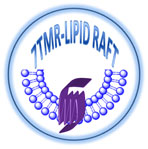Serine protease signaling of epidermal permeability barrier homeostasis
| Title | Serine protease signaling of epidermal permeability barrier homeostasis |
| Publication Type | Journal Article |
| Year of Publication | 2006 |
| Authors | Hachem, JP, Houben E, Crumrine D, Man MQ, Schurer N, Roelandt T, Choi EH, Uchida Y, Brown BE, Feingold KR, Elias PM |
| Journal | J Invest Dermatol |
| Volume | 126 |
| Pagination | 2074-86 |
| Date Published | Sep |
| ISBN Number | 0022-202X (Print)0022-202X (Linking) |
| Accession Number | 16691196 |
| Keywords | Adult, Animals, Cells, Cultured, Epidermis/cytology/*enzymology/injuries, Female, Homeostasis/physiology, Humans, Keratinocytes/*enzymology/secretion/ultrastructure, Male, Mice, Mice, Hairless, Mice, Knockout, Microscopy, Electron, Permeability, Receptor, PAR-2/genetics/*metabolism, Serine Endopeptidases/*metabolism, Signal Transduction/*physiology |
| Abstract | Evidence is growing that protease-activated receptor-2 (PAR-2) plays a key role in epithelial inflammation. We hypothesized here that PAR-2 plays a central role in epidermal permeability barrier homeostasis by mediating signaling from serine proteases (SP) in the stratum corneum (SC). Since the SC contains tryptic- and chymotryptic-like activity, we assessed the influence of SP activation/inhibition on barrier function. Acute barrier disruption increases SP activity and blockade by topical SP inhibitors (SPI) accelerates barrier recovery after acute abrogation. This improvement in barrier function is due to accelerated lamellar body (LB) secretion. Since tryptic SP signal certain downstream responses through PAR-2, we assessed its potential role in mediating the negative effects of SP on permeability barrier. Firstly, PAR-2 is expressed in the outer nucleated layers of the epidermis and most specifically under basal condition to the lipid raft (LR) domains. Secondly, tape stripping-induced barrier abrogation provokes PAR-2 activation, as shown by receptor internalization (i.e. receptor movement from LR to cytolpasmic domains). Thirdly, topical applications of PAR-2 agonist peptide, SLIGRL, delay permeability barrier recovery and inhibit LB secretion, while, conversely, PAR-2 knockout mice display accelerated barrier recovery kinetics and enhanced LB secretion, paralleled by increased LR formation and caveolin-1 expression. These results demonstrate first, the importance of SP/SPI balance for normal permeability barrier homeostasis, and second, they identify PAR-2 as a novel signaling mechanism of permeability barrier, that is, of response linked to LB secretion. |
| URL | http://www.ncbi.nlm.nih.gov/entrez/query.fcgi?cmd=Retrieve&db=PubMed&dopt=Citation&list_uids=16691196 |
